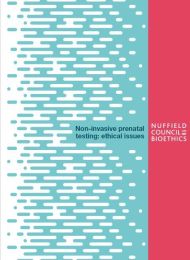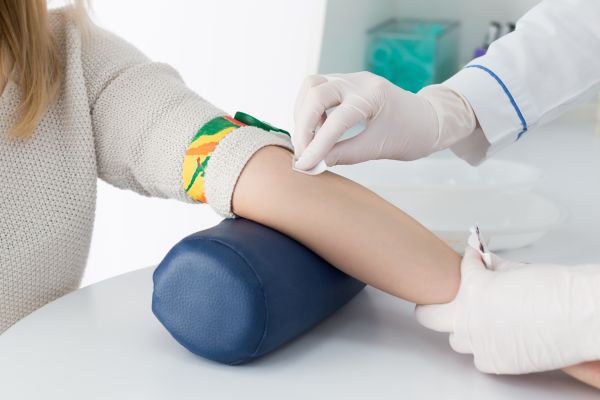Non-invasive prenatal testing: ethical issues
Report
Published 01/03/2017

Introduction to NIPT
What is NIPT?
Non-invasive prenatal testing (NIPT) is a technique that can be used to test a fetus for a range of genetic conditions and variations using a blood sample taken from the pregnant woman. It is referred to as ‘non-invasive’ because it does not involve inserting a needle into the woman’s abdomen or cervix, as is the case with invasive testing where cells are taken from the amniotic sac (in amniocentesis) or the placenta (in chorionic villus sampling, or CVS).
How does it work?
Small amounts of DNA, often referred to as ‘cell free DNA’ (cfDNA), circulate in everybody’s blood. From an early stage in pregnancy, this includes DNA from the placenta, which is very similar to the fetal DNA. By analysing these cfDNA fragments, it is possible to find out genetic information about the fetus. The amount of fetal cfDNA in the woman’s blood increases as the pregnancy progresses. NIPT can be carried out from about 9 or 10 weeks of pregnancy, which is when there is usually enough fetal cfDNA in the woman’s blood to get an accurate result.
What does it test for?
Currently, NIPT can be used to test a fetus for a range of genetic conditions or variations, for example:
- It can be used to estimate the chance that a fetus has Down’s, Edwards’ or Patau’s syndrome (an invasive test is still required to provide a definitive diagnosis).
- It can provide a definitive diagnosis for some genetic conditions, such as cystic fibrosis, achondroplasia and Apert syndrome, if they are inherited from the father or arise at conception.
- It can be used to determine the sex of a fetus.
The accuracy of NIPT varies depending on the condition or variation being tested for. Different circumstances can also affect the accuracy, such as whether it is a single or multiple pregnancy and if the fetus is already known to be at increased risk of the condition.
What is new about NIPT?
NIPT has a number of features that distinguish it from other prenatal screening and testing techniques:
- It is more accurate than other noninvasive prenatal screening tests for Down’s, Edwards’ and Patau’s syndromes, including the combined test currently offered to all pregnant women in the NHS.
- Because it is non-invasive, NIPT carries no risk of miscarriage.
- In some circumstances, NIPT can provide earlier results than current screening and diagnostic tests.
- NIPT requires no specialist skills or equipment in the healthcare setting, such as sonographers and ultrasound equipment.
- It is less physically uncomfortable for the woman than invasive diagnostic testing such as amniocentesis, which can be unpleasant and painful for some women.
Screening and testing
Prenatal screening is when a test is offered to whole populations of pregnant women to find out the chance that their fetus has or might develop particular diseases or conditions.
Prenatal diagnostic testing generally refers to testing offered to particular individuals to confirm or rule out diseases, conditions or variations that it is suspected a fetus might have.

Share